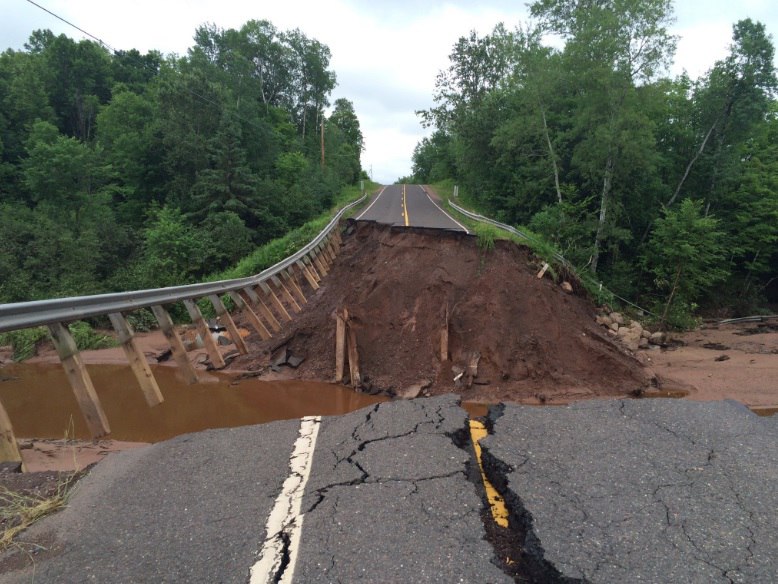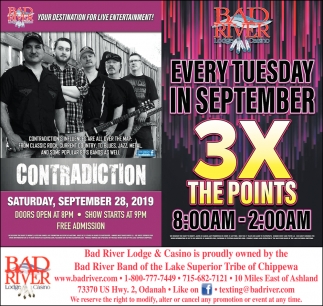Bad River Casino Ashland Wisconsin
- Bad River Casino Ashland Wisconsin Restaurants
- Bad River Casino Ashland Wisconsin Resorts
- Bad River Casino Ashland Wisconsin Map
- Bad River Casino Ashland Wisconsin Hotels

Ashland Bad River Lodge Casino & Hotel Near the shore of Lake Superior, you will find the Bad River Lodge & Casino in Odanah, who is open everyday from 8pm. It's in a friendly and lively atmosphere that you'll 0 reviews. What are some of the property amenities at Bad River Lodge and Casino? Some of the more popular amenities offered include free wifi, a pool, and an on-site restaurant. See all property amenities. What food & drink options are available at Bad River Lodge and Casino? Bad River Lodge, Casino & Convention Center offers accommodation facilities and recreation services to its customers. It features a variety of rooms, including queen, king, super king and Jacuzzi suite. Its amenities include an indoor pool and lobby. The casino has video poker, china moon, jungle wild, double life of luxury and keno machines.
- Bad River Lodge and Casino
Contact Information
Location

Bad River Casino Ashland Wisconsin Restaurants

RV Parking and Camping Information
Other Information
Photos
Map
User reviews
Bad River Casino Ashland Wisconsin Resorts
Bad River Casino Ashland Wisconsin Map
Bad River Casino Ashland Wisconsin Hotels
Introduction
The Bad River Reservation was established by the 1854 Treaty of Lapointe with the U.S. government and was sited along the beautiful shores of Lake Superior and Chequamegon bay. This treaty was finalized on September 30, 1854 at Lapointe on Madeline Island, longtime capital and cultural/religious center of the Ojibwe AKA Chippewa Nation.
Bad River is the largest Chippewa reservation in the state at 124,459 Acres. The reservation boundaries encompass lands in two counties and six municipal townships with 36 miles of Anishinaabeg-Gichigami (Lake Superior) shoreline and over 488 miles of rivers and streams. The 1854 Treaty also set aside 200 acres for traditional “fishing grounds” on the largest island of the 22 Apostle Islands, Madeline Island.
The meaning of the word Ojibwe is unclear at this point: some would translate it as “he who writes”, referring to the fact that the people kept some of their records written on birchbark scrolls in a pictographic writing system they had developed. The Ojibwe people have been located in this area since well before Columbus stumbled onto the Americas; historically, the French explorers Radisson and Groseilliers encountered the Ojibwe people here in the mid-1600’s.
The Bad River Band is one of six Ojibwe bands in Wisconsin that are federally recognized tribes, four set aside reservation treaty lands in the Treaty of 1854. These four are Bad River, Red Cliff, Lac Du Flambeau and Lac Courte Oreilles; the other two bands are St. Croix and Mole Lake. Linguistically the band is listed as being of the Algonkian language stock; the native language is known as Ojibwe Anishinaabemowin. The Chippewa or Ojibwe Nation is one of the three largest native nations in North America. Ojibwe people are culturally known as semi-nomadic hunters, fishermen and gatherers. They are a patrilineal society meaning their clan or “dodem” membership is passed down through the father. A person’s clan membership originally denoted what function in society the family and individual would fulfill. The primary clans surviving here are the Crane, Loon, Eagle, Bear, Marten, Lynx, Bullhead, Sucker and Turtle. The original religious society is known as Midewiwin or Grand Medicine Lodge.
In modern times people may belong to the Midewiwin, one or more of the Big Drum societies, or a Christian Sect primarily Catholic and Methodist. The Ojibwe people traveled from the east coast St. Lawrence River area west around the great lakes to their present locations over a considerable period of time. Legend tells of a search for a place where food grows on the water; that food is Wild Rice and is located in most of the Ojibwe country today. Odanah (meaning village) was originally located at the confluence of the Bad and White Rivers. The area was originally known as “Gete Gititaaning” meaning “at the old garden”. This area is rich in topsoil due to the flooding of the rivers; this is where the people used to plant their gardens and return in the fall to harvest. The Kakagon Slough area contains most of the Wild Rice beds the tribe harvests from annually; this is one of the largest pristine freshwater wetland estuaries in the Midwest. The entire reservation is located in a bowl that is surrounded by highlands on three sides; the continental divide is south of the reservation so the rivers here flow north. The location in this bowl with its proximity to Lake Superior provides natural protection from cold, snow and summer heat. The weather is warmer during most of the winter, cooler in summer and this area gets less snow than the surrounding areas. The woodlands are mixed cutover lands having been clear-cut of pine between 1850 and 1920; they support many species of game animals and furbearers.
The primary game animals are: deer, bear, rabbit, ruffed grouse, ducks and geese. The primary furbearers are: muskrat, beaver, mink, marten, raccoon, fox and fisher. There are a few moose and wolves on the reservation but these are highly protected due to their rarity. The rivers are rimmed with Maple trees which originally provided much Maple Sugar for tribal harvesters. Today there are only about a half dozen to a dozen families who still harvest the Maple Sugar, usually in the form of Maple Syrup for home use, sale or trade. The rivers also provide spawning areas for the many species of fish in the area. The primary species are walleye and northern pike, sucker, trout/salmon, burbot, bass and sturgeon. Although most people include fish in their diet there are only a few commercial fishermen on the reservation. Most are subsistence fishermen: they take only what they need to feed their families; they do not sell fish for profit. Each year the tribal Natural Resources Department nets walleyes, hatches the eggs and returns many millions of fry and fingerlings to the Kakagon and Bad Rivers. They have also hatched fish for other entities to further enhance northern Wisconsin’s Walleye resource.
The primary employer is tribal government, either in administration of social programs or for-profit enterprises like the casino gaming operations. The tribal government was originally the chiefs council which was made up of hereditary chiefs and head men from each clan. They made decisions for the tribe on a consensus basis.
Today the governing board is the tribal council which is made up of seven elected at large officials: Tribal Chairman, Vice Chairman, Secretary, Treasurer, two Senior Council Members and one Junior Council Member. The tribal council form of government has been in effect since shortly after the passage of the Indian Reorganization Act of 1934. They serve as the policy/law making body for the tribe, decisions are made on a majority basis. The chairman also functions as the chief executive officer of the tribal administration which administers government contracts and for profit enterprises. The administration is divided into departments which are managed by professional tribal administrators. Wisconsin is what is known as a Public Law 280 State which gives criminal jurisdiction on Indian Reservations (except the Menominee) to the state. Civil jurisdiction such as hunting/fishing/gathering laws is a function of the tribe. The tribal court system oversees civil cases while criminal cases are overseen by state courts and enforced by state/county police officers. The majority of children attend public schools in nearby Ashland with a few in private or parochial schools. The tribe has a preschool Headstart program for three to five year old’s. Health care is provided by the Bad River Health Clinic for reservation residents. This includes a part time doctor, full time family nurse practitioner, pharmacist and several nurses.